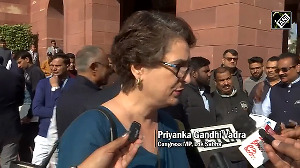- Investors enter bond funds after the prices have moved up; that is, they buy at the highest price. This is largely due to lack of knowledge and inability to interpret simple indications from the economy.
- Awareness levels are not necessarily very high even among professionals and hence total reliance on professionals is hazardous for investors' financial health.
- Bond prices are inversely related to interest rates; that is, when rates fall, bond prices move up and vice versa.
The first two points are explained in the first two articles (see related links) with examples and data whereas the last point was explained in the previous article using a simple hypothetical example.
Readers are requested to read all the three articles before proceeding because this article is a continuation of the previous three.
Let us try to understand basic bond market today before going into selection of debt schemes.
As mentioned in one of the previous articles, debt is nothing but a loan and any loan has the following three salient features:
- How much money is borrowed (face value or par value of the bond)?
- For how long has the money been borrowed (term to maturity)?
- At what rate of interest has the money been borrowed (coupon rate)?
Take the case of a bank fixed deposit. If we deposit Rs 100 in a bank for one year at 9 per cent, the bank is the borrower and we are the lender/ depositor. The FV of the FD is Rs 100, term is one year and coupon or rate of interest is 10 per cent
If we take a housing loan of Rs 20 lakh for 20 years at 10.75 per cent, it is still the same.
If I borrow Rs 100 from my friend for one day it is also a loan where the term to maturity is extremely small (24 hours) and the rate of interest is 0 per cent, as my friend will (hopefully) not ask for any interest.
So we have established that a loan will always have the above three features.
Borrowers may need money for any period of time. In some later articles we will focus on types of short-term and long-term instruments. For the time being let us assume that we are in the calendar year 2000 and we have Rs 100 to invest. We do not need the money immediately and hence we can afford to invest for a very long time. All the rates of interest used in the example are very close to real ones existing at that point of time. Some calculations have been ignored to make things simple.
Say we go to the bank and listen to the banker's suggestion that we invest the Rs 100 in a one year FD at 12 per cent. After one year, that is, in 2001, we get our Rs 112 and since we do not really need the money immediately, we again take the banker's suggestion.
The banker tells us to again reinvest Rs 112 in a year FD at 10 per cent. When we ask why 10 per cent this time around and not 12 per cent, the banker tells that interest rates have fallen. So we reinvest the Rs 112 at 10 per cent and after one year, that is, in 2002, we get slightly more than Rs 10 as interest. So, in 2002 we have Rs 122 with us, which we again reinvest at 8 per cent this time around for another year. By the time the FD matures, we get Rs 8 on our investment and thus after 3 years we have earned Rs 30 on our investment of Rs 100!
By the time 2003 is over, we have learnt one lesson that the banker who was suggesting us to invest for one year at a time was not giving the best advice, because every time we reinvested, the FD rates had come down as compared to the previous year; and we therefore choose to ignore him here onwards. We are so frustrated with these falling rates that we start fearing that the rate will continue to go down, and hence we invest our Rs 130 at 6 per cent for the next 10 years!
And what happens after that? As luck would have it, interest rates start moving up from 6 per cent in 2003 all the way to 10 per cent till 2008!
The familiar feeling of being the targeted one comes back to us. Why is it that this always happens with me? Why is it that when I invest for the long term the FD rates start moving up?
As mentioned in the previous articles, if only we devoted some of our time in understanding the language of money, we would be in a much better position. We will take this analogy of bank FD to debt markets in the next article, where we will again revisit the most important point in bond markets -- when rates go down, bond prices go up.
Till then think about this: is an FD in any way similar to a bond/ debt paper? Would you have liked it if you would have known earlier that interest rates would be going down from 2000 and would be rising from 2003 and again start falling from 2008? If you wanted to invest Rs 100 in a FD in 2000, what strategy would you have adopted?
Next article we will discuss these points. Do mail your answers. Remember if you love your money, you have to give it time, you have to understand it and you have to understand its language. Investing is not easy, but it is not so difficult either as it is made out to be!
Disclaimer: This article is for information purposes only. Please do not take investment decision based on this article.
The author is a financial trainer for National Institute of Securities Market (Securities and Exchange Board of India's investor awareness arm), Bombay Stock Exchange and leading mutual funds. He runs a website www.moneybee.info and can be reached at ashutosh@moneybee.info.





